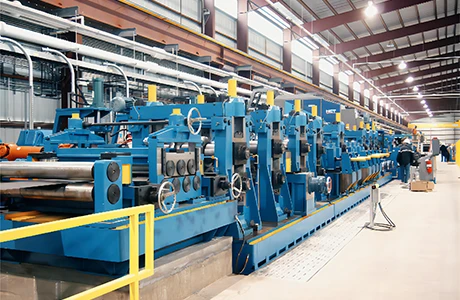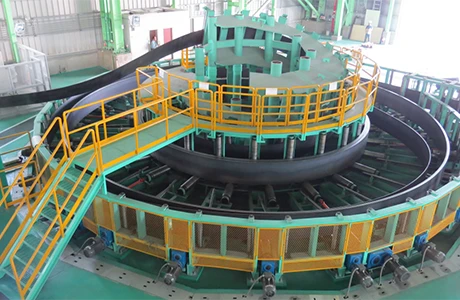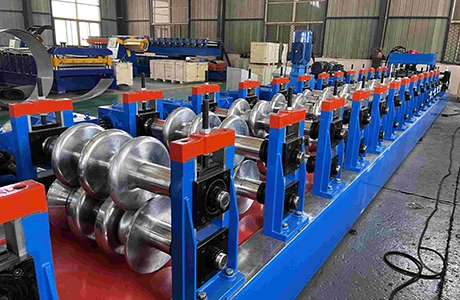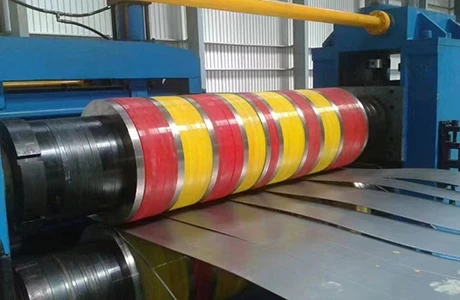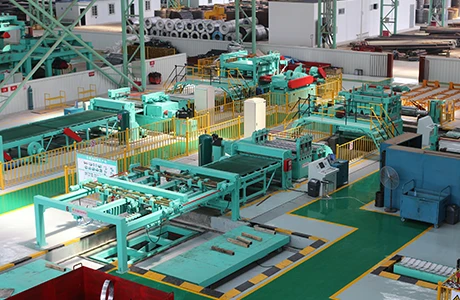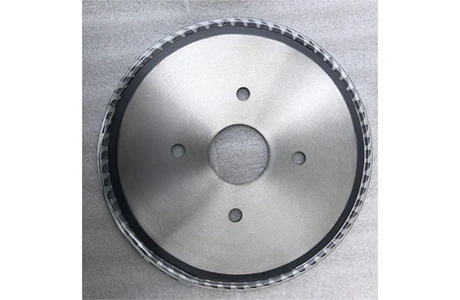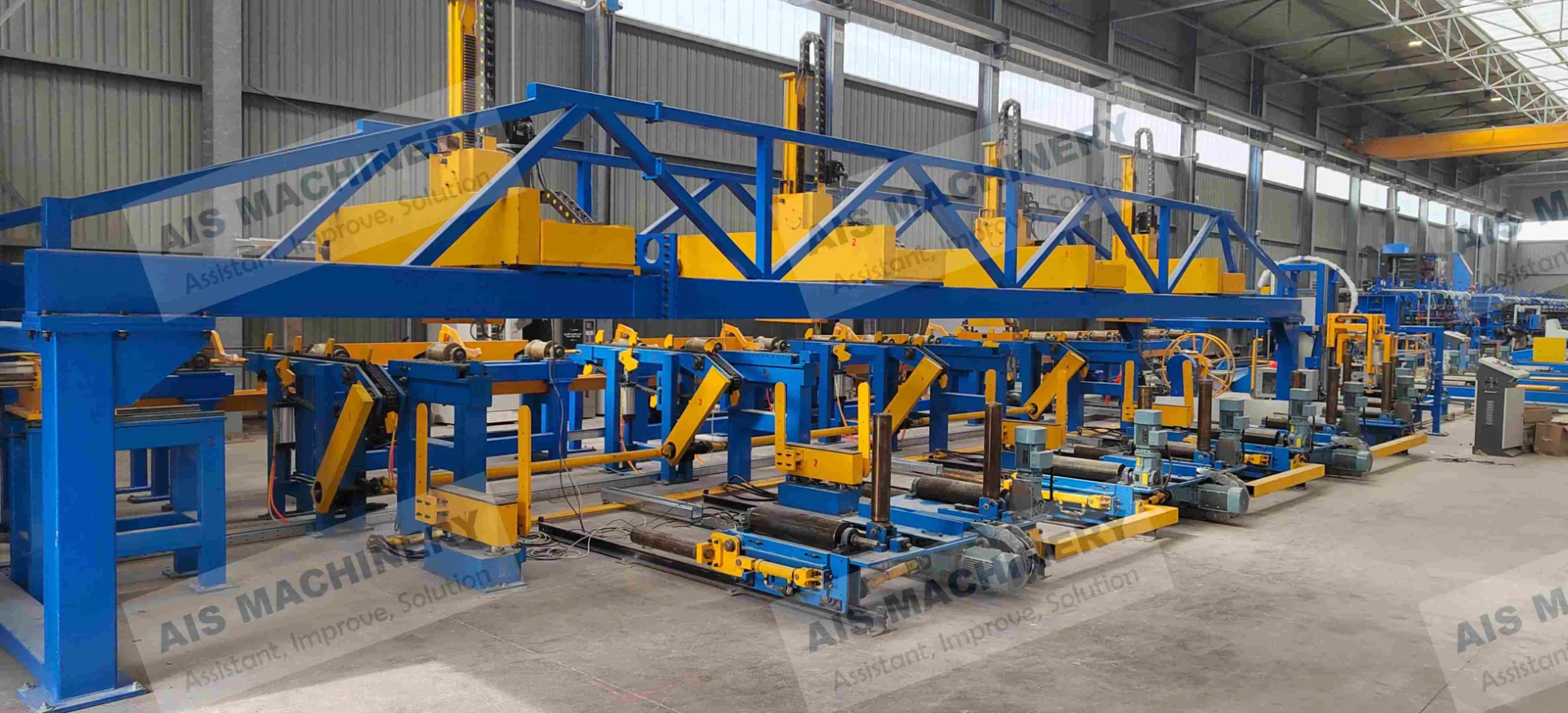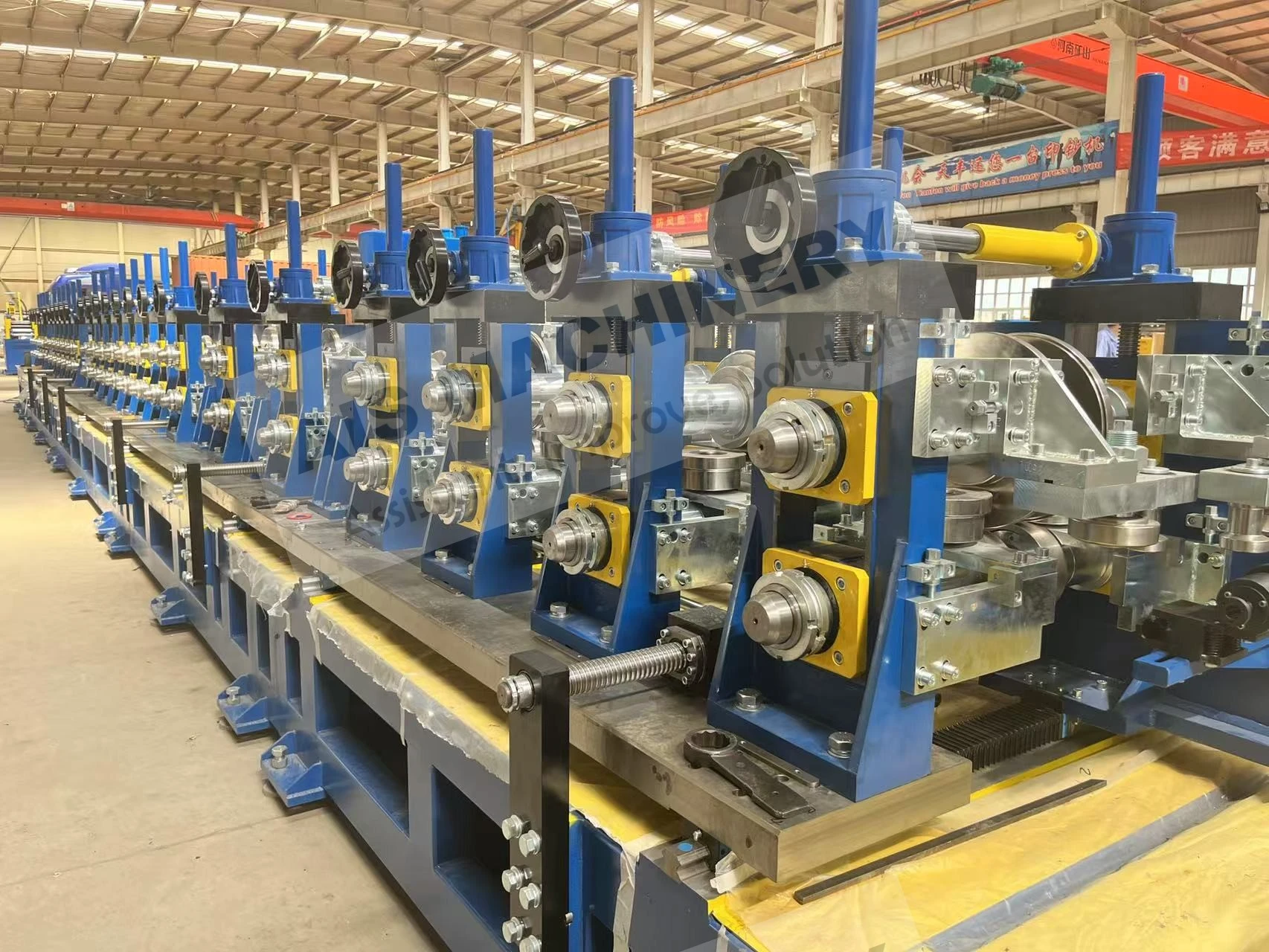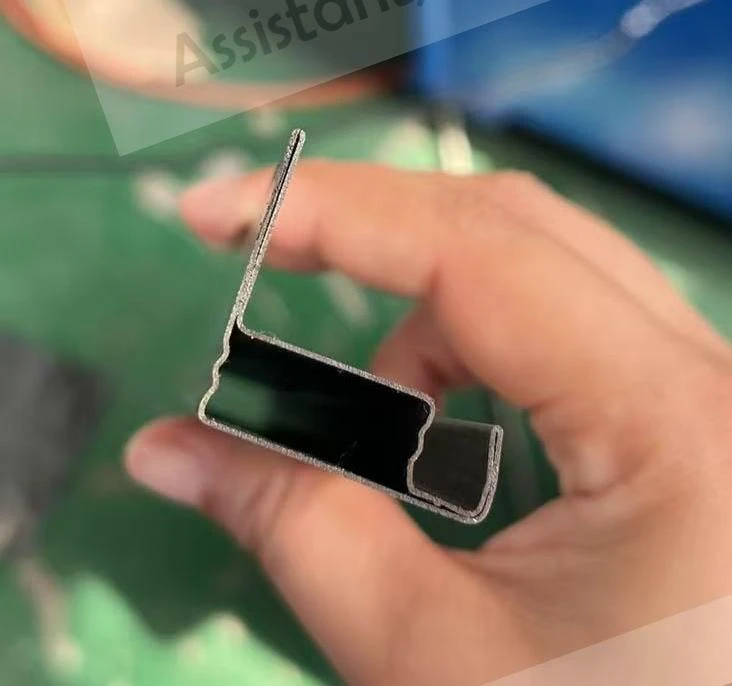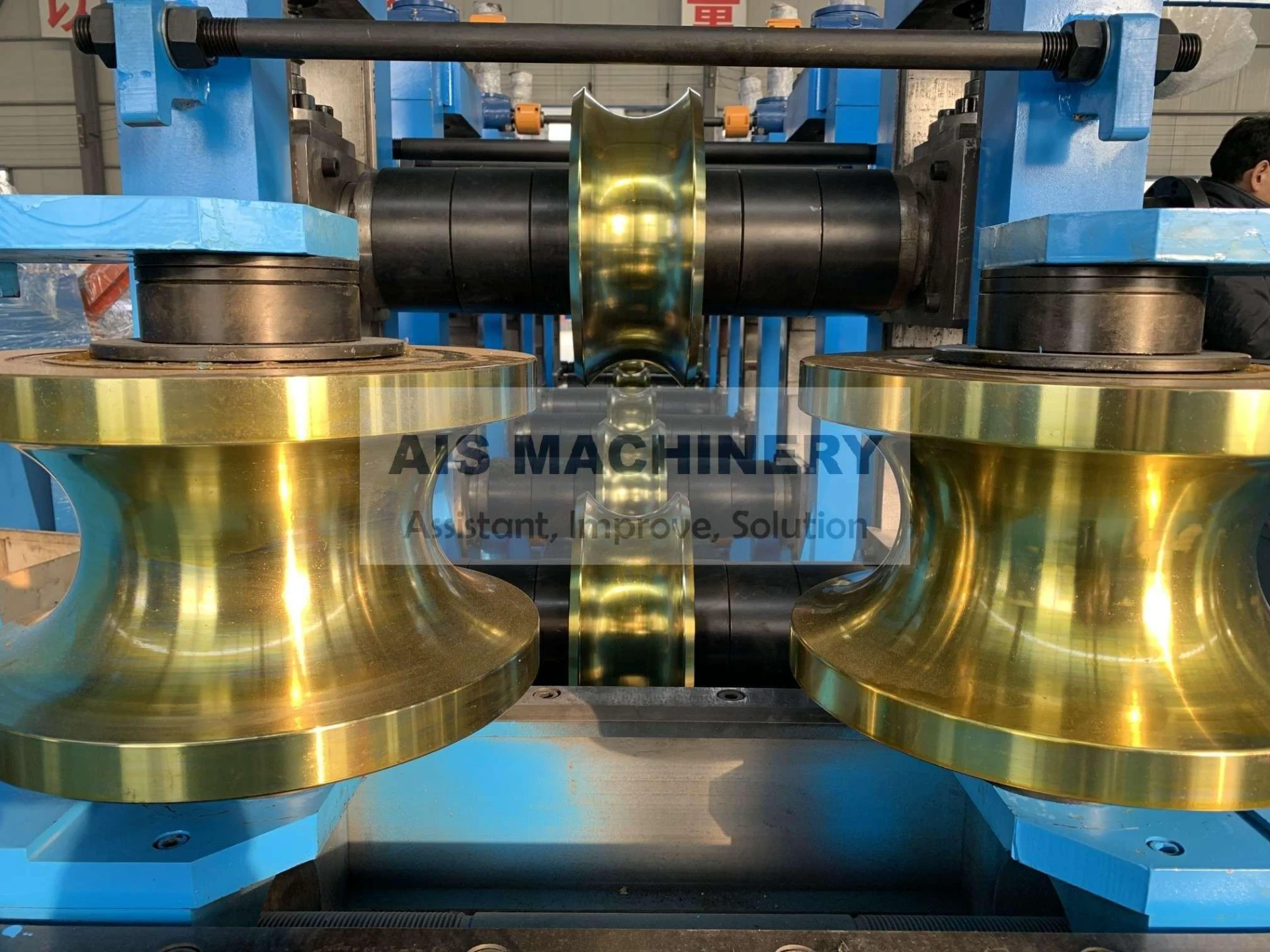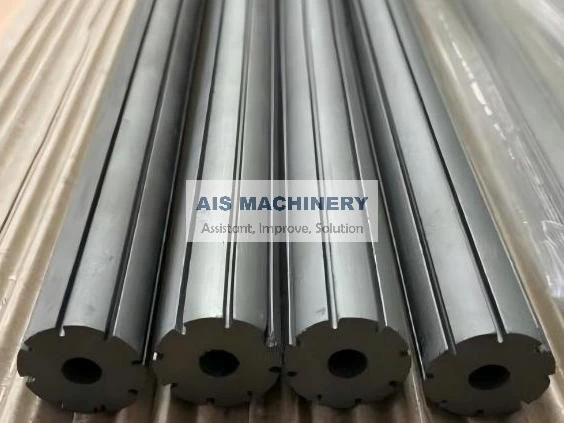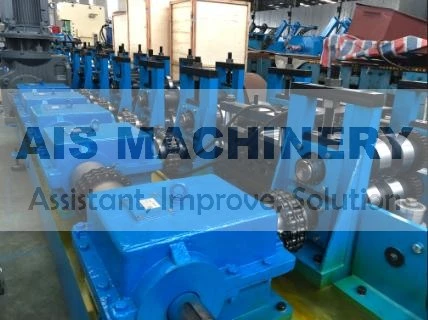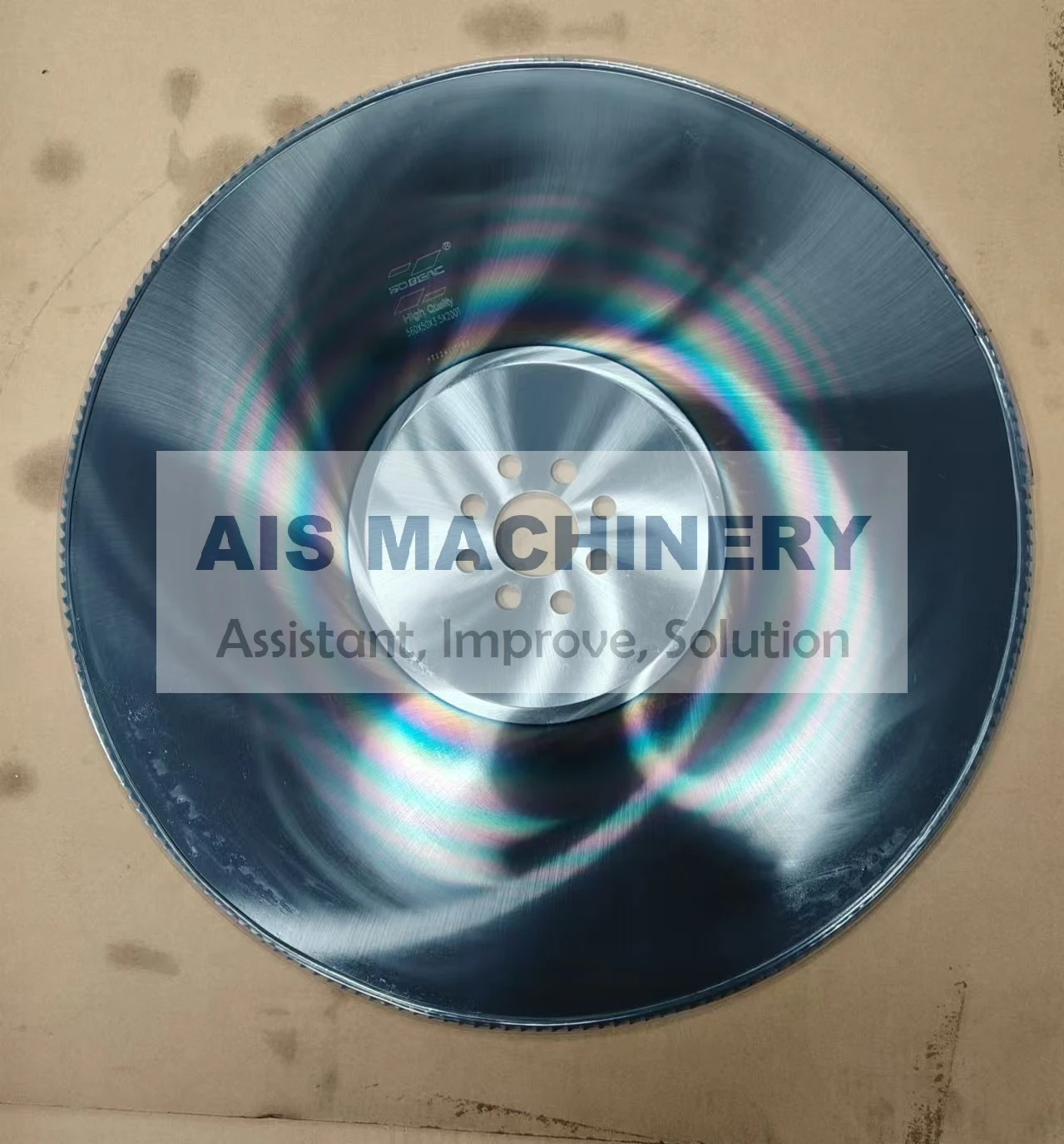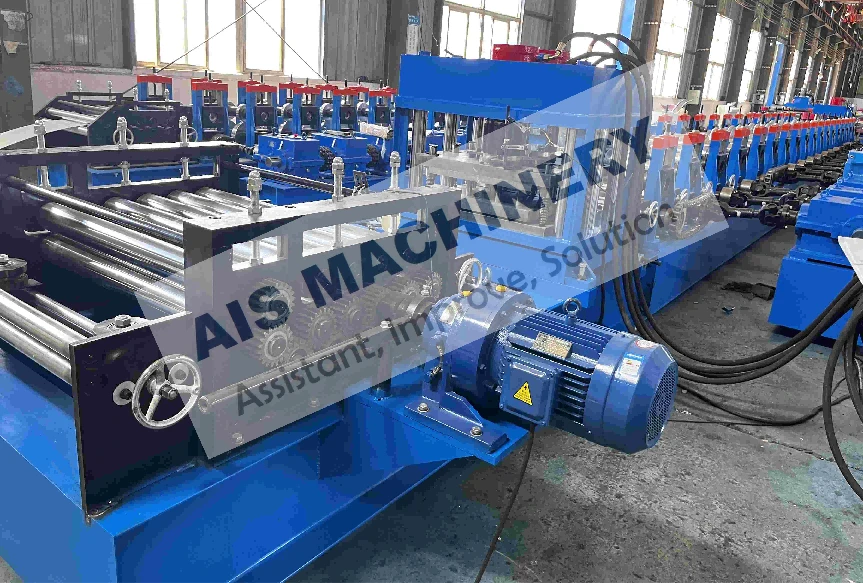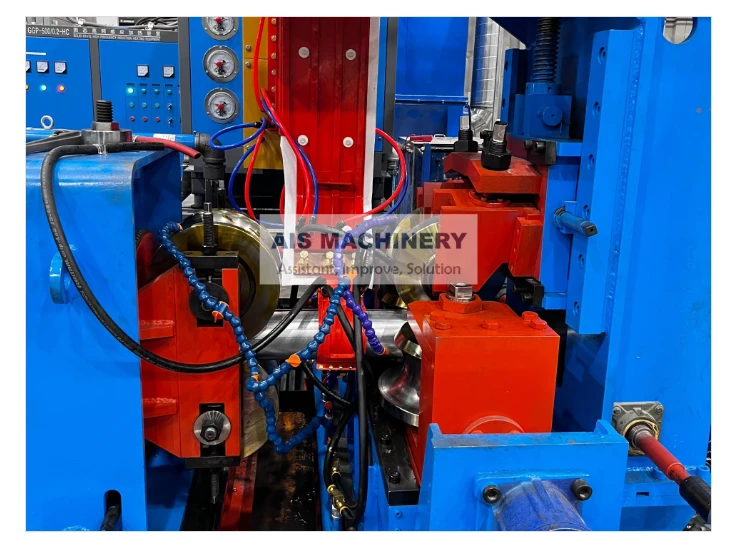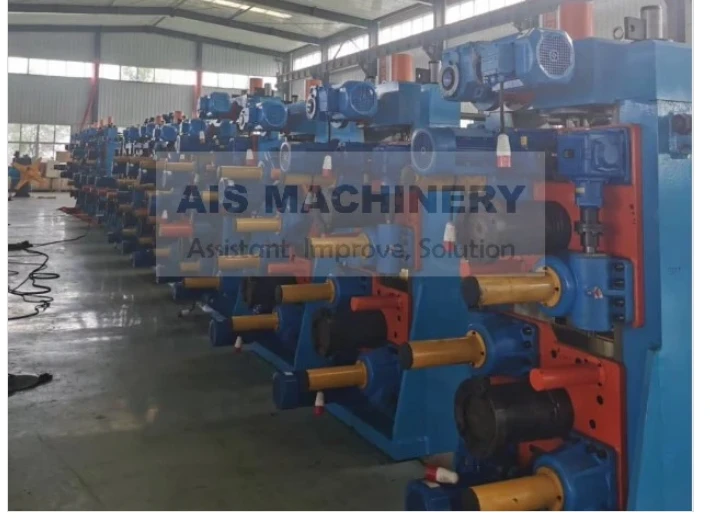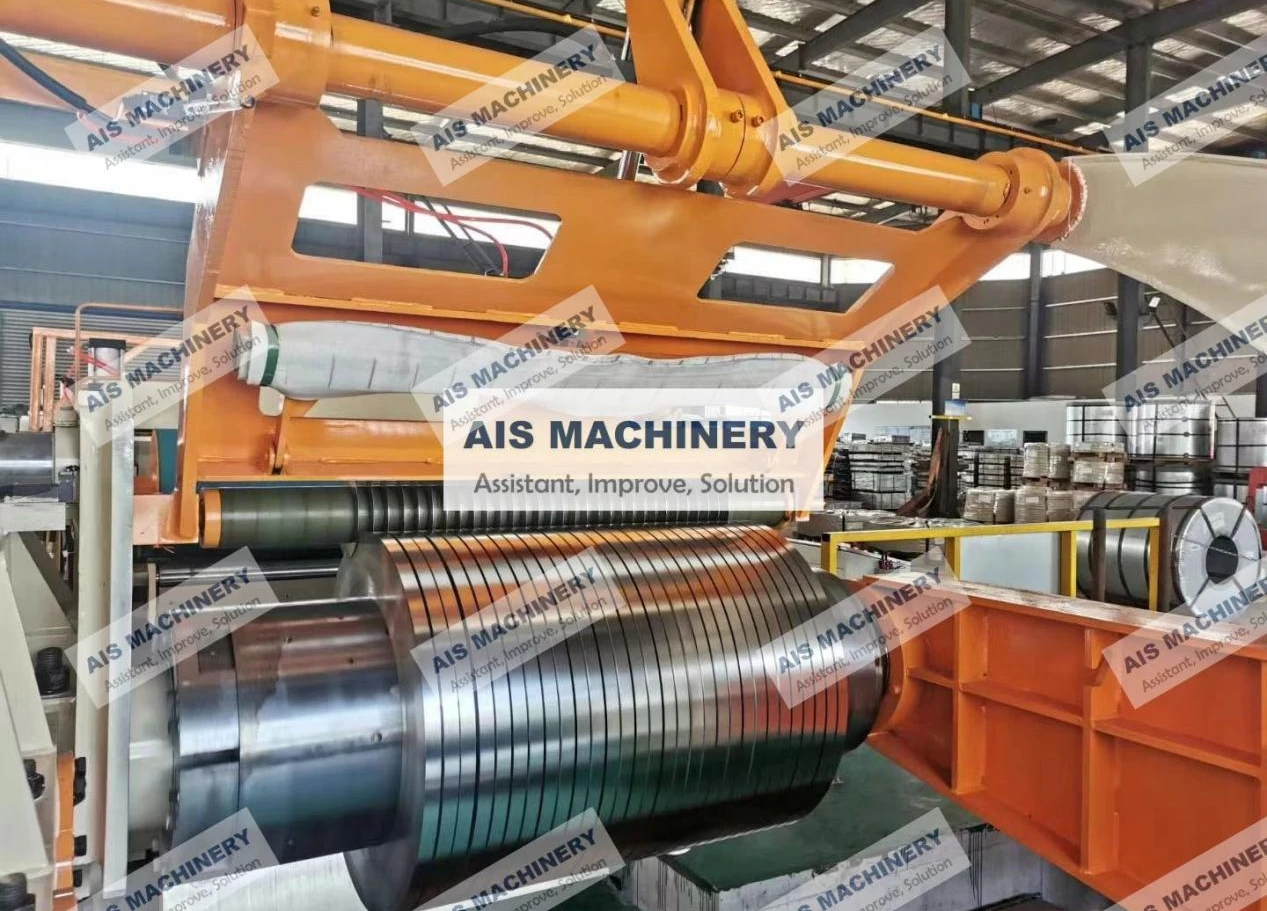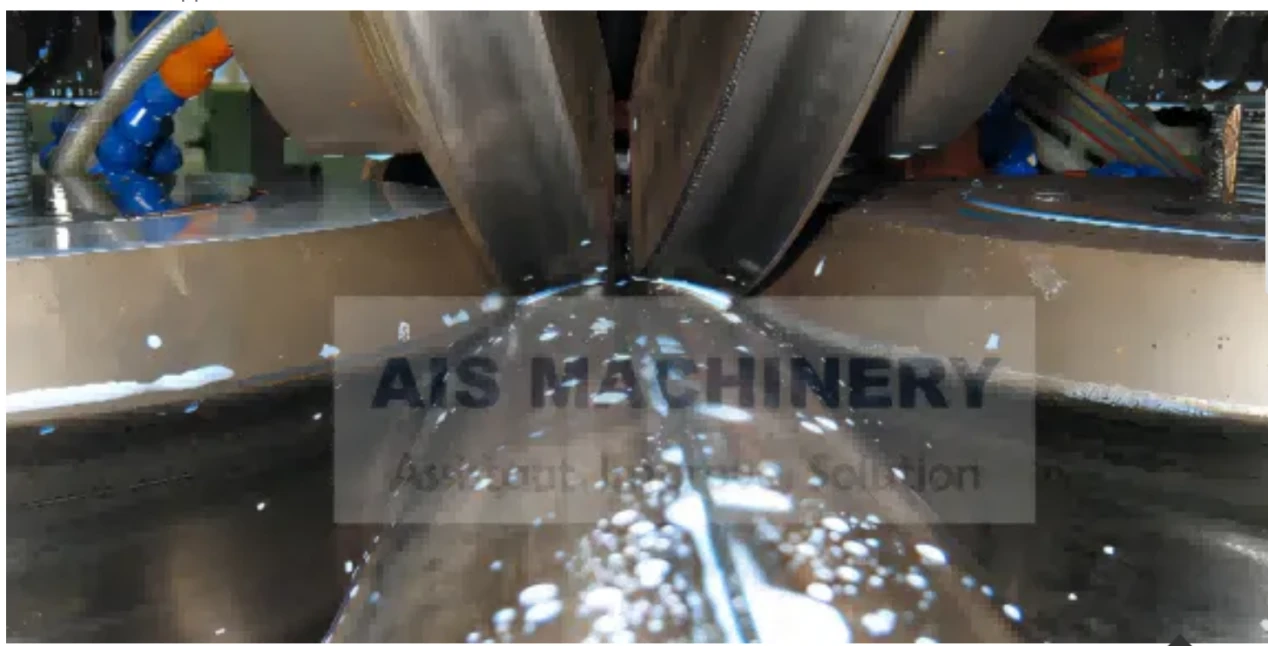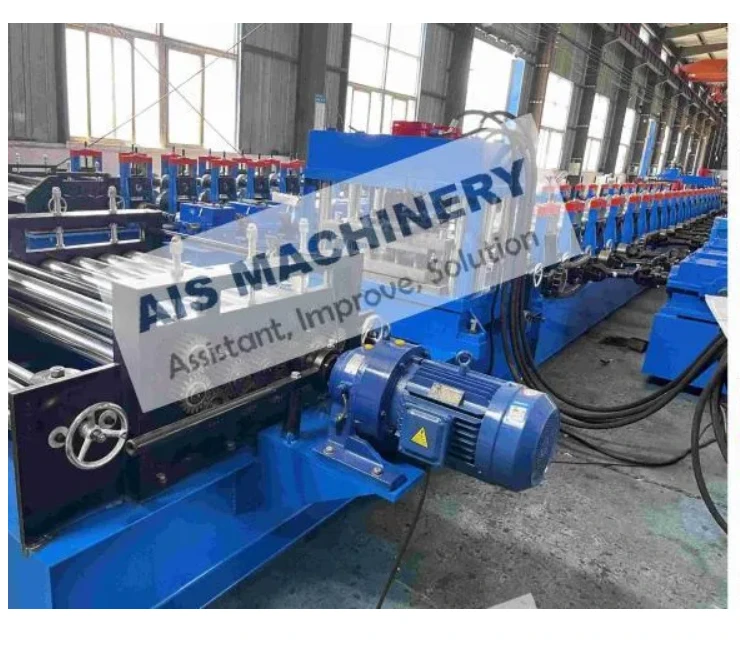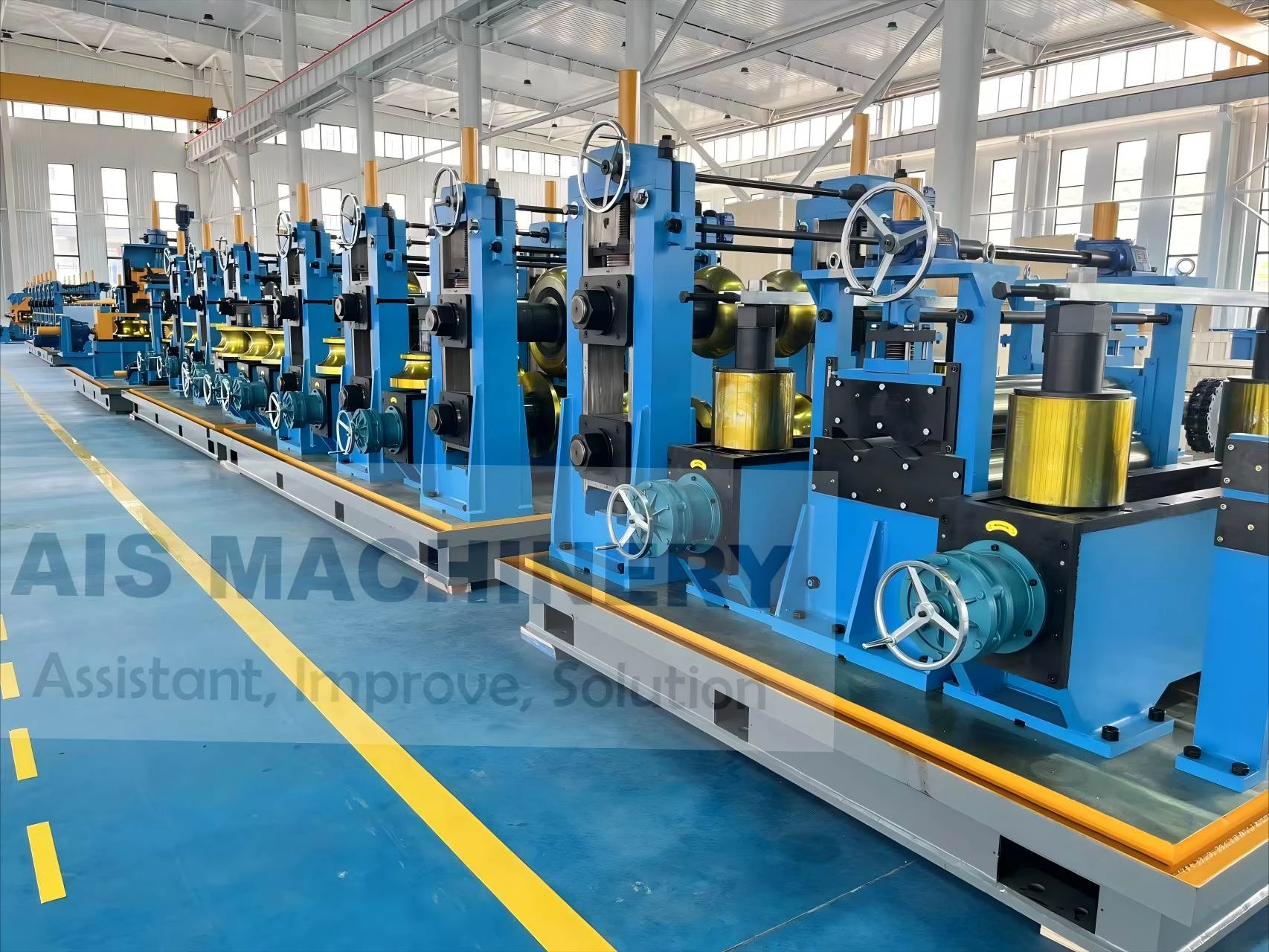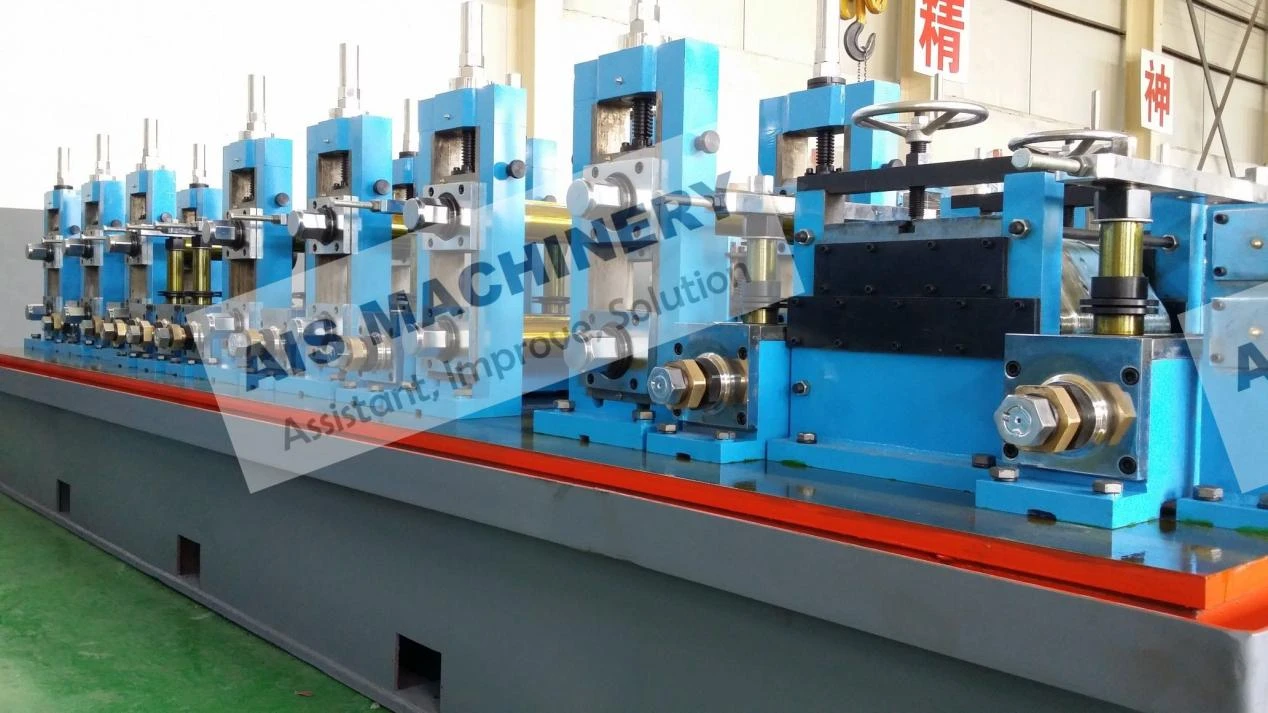The friction saw is an online flying cutting system that uses high-speed rotating HSS blades to generate heat through friction, enabling efficient hot cutting of steel pipes. It is especially suitable for continuous production of carbon steel pipes, offering high-speed performance with relatively low operating cost. Compared to cold saws, friction saws are ideal for medium-to-large diameter pipes with moderate wall thickness.
2. BASIC DESIGN DATA
يعتمد تصميم الخط المقترح على المواصفات التالية:
|
Parameter
|
Specification
|
|
Applicable Pipe Diameter
|
Φ12.7mm – Φ406mm
|
|
Applicable Wall Thickness
|
0.5mm – 16.0mm
|
|
Saw Blade Diameter
|
Ø600mm – Ø1600mm
|
|
Main Motor Power
|
55kW – 160kW (variable frequency drive)
|
|
Max Cutting Speed
|
60 – 120 m/min (synchronized with line speed)
|
|
Cutting Length Range
|
4 – 12 meters (adjustable)
|
|
Length Tolerance
|
±3mm
|
|
Blade Cooling Method
|
Air cooling with optional nozzle blowers
|
|
Control System
|
PLC + HMI + Servo tracking system
|
|
Cutting Type
|
Single-blade (standard) or dual-blade (optional)
|
|
Saw Blade Type
|
65Mn , 8CrV type
|
3. Friction Saw Selection Guide
|
Item
|
Recommended Range
|
Notes
|
|
Pipe Diameter Range
|
Φ12.7 – Φ406mm
|
Match blade size with max pipe size
|
|
Max Wall Thickness
|
≤16.0mm (Carbon Steel)
|
Best for structural/general-purpose pipes
|
|
Blade Diameter Options
|
300mm/600mm / 800mm / 1000mm / 1250mm / 1600mm
|
Larger pipes require larger blades
|
|
Main Motor Power Range
|
55 – 160 kW
|
Depends on pipe size and cutting load
|
|
Line Cutting Speed
|
80 – 120 m/min
|
Works with servo-driven tracking system
|
|
Pipe Clamping
|
Pneumatic or hydraulic (double-sided)
|
Ensures stable cutting at high speed
|
|
Structure Type
|
Single blade (standard) / Dual blade (for heavy pipe)
|
Dual blade recommended for thick-wall pipes
|
4. Friction Saw vs. Cold Saw – Comparison Chart
|
Category
|
🟠 Friction Saw
|
🔵 Cold Saw
|
|
Cutting Principle
|
High-speed frictional heating and hot cutting
|
Low-speed, high-torque mechanical cutting
|
|
Blade Type
|
HSS (High-Speed Steel) friction blade
|
TCT / HM (Tungsten Carbide Tipped / Carbide) blade
|
|
Suitable Materials
|
Carbon steel
|
Carbon steel, stainless steel, alloy steel
|
|
Cutting Speed
|
Fast (60–120 m/min)
|
Medium (≤40 m/min)
|
|
Cutting Precision
|
±3mm (standard)
|
±1mm or better (high-precision)
|
|
Thermal Effect
|
Moderate (visible heat-affected zone)
|
Minimal (smooth, clean edges)
|
|
Burr & Surface Quality
|
May require post-processing
|
Excellent; minimal finishing required
|
|
Blade Life
|
Shorter (200–600 cuts/blade)
|
Longer (1000–2000+ cuts/blade)
|
|
Investment Cost
|
Lower (machine + blade cost)
|
Higher (machine + blade cost)
|
|
Best Applications
|
Structural pipes, scaffolding, fluid tubes
|
Automotive tubing, precision pipe, export-grade pipe
|
|
Not Recommended For
|
Stainless / high-alloy / ultra-thick steel
|
Extremely thick carbon steel (>10mm)
|
5. Conclusion & Recommendations
-
The flying friction saw is ideal for high-speed, continuous production of carbon steel tubes with moderate wall thickness and standard cutting tolerance.
-
For precision cutting, or when working with stainless steel or alloy steel, the cold saw provides better finish and dimensional control, although at a higher cost.
-
For flexible and cost-effective tube mills, many manufacturers choose a dual-system configuration—friction saw for general cutting, and cold saw for special grades or high-precision tubes.
6. Common Issues & Solutions – Flying Friction Saw for ERW Tube Mill
🛠️ Maintenance Tips:
-
🕑 Inspect the blade daily for cracks, dull teeth, and heat spots
-
🔩 Tighten mechanical connections weekly (clamps, bearings, guides)
-
💨 Check cooling system air ducts and nozzles regularly to avoid clogging
-
⚙️ Recalibrate servo tracking every 500 hours or when pipe length deviation exceeds tolerance
-
🧰 Keep spare blades and wear parts (bearings, belts) in inventory to reduce downtime
شهادة لدينا

 هاتف: 86-15176910262
هاتف: 86-15176910262

